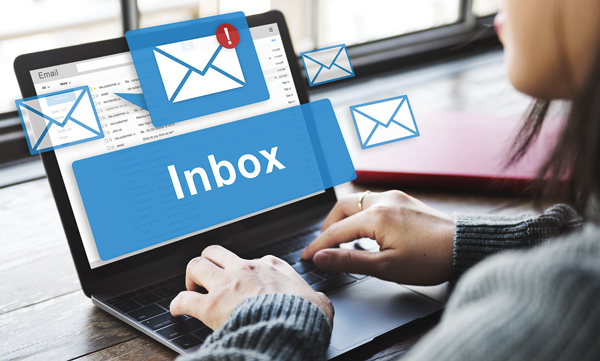BY BILL FAETH
 Despite what you might hear, email marketing is not dead. It’s still alive and more important than ever: Think about all the email you send and receive in one day alone.
Despite what you might hear, email marketing is not dead. It’s still alive and more important than ever: Think about all the email you send and receive in one day alone.
What is going out of style, however, is the one-size-fits-all newsletter blasted to your entire email database with no follow-up communication between each one.
In order to successfully execute email marketing in 2017, your email content needs to be targeted to your different types of customers based on their unique buying cycles. Why would you send the same email to your corporate customers that you would to parents booking a party bus for their teen’s prom?
Ideally, you should create a different email sequence for each of your primary types of customers with different messaging and delivery dates depending on when that particular audience.
For example, a business traveler who requests a quote for a standard airport transfer usually has a 48- to 72-hour timeframe after the original request to make a reservation. Conversely, a bride may request information about transportation nine months in advance from now but likely won’t book the reservation until 60 to 90 days prior to the wedding.
If you send the same information about your services to each of these two buyers within the same three-to-five-day period, you will lose both because that delivery schedule does not match either decision-making timeframe.
To know when to send (and what to put in) your targeted emails, you need to understand what people are looking for when they are deciding to make a purchase.
What Your Customers Need to Hear From You
No matter what type of customer you are attracting—a business traveler going to the airport, a meeting planner coordinating group transfers, a woman planning her best friend’s bachelorette party, or a parent coordinating prom transportation—your potential customers will choose to buy from you for one of four reasons: for personal gain, because of a recommendation, based on logic or research, or fear of a missed opportunity.
When you are crafting email marketing messages for each of your customer segments, consider these four motivating factors, and tailor your email content to address those specific needs.
For customers looking to gain something from the experience, describe the benefits your company offers. Explain how your services can make their lives or jobs easier by getting them from point A to point B faster, easier, and on time. Include your unique value proposition so that customers can distinguish your services from other transportation options.
Those customers who buy based on recommendation will love testimonials from your existing customers. In today’s review-based society, purchasing decisions are often made because of a glowing recommendation. Testimonials will be a crucial part of your email communications. Include screenshots of reviews left on Facebook, Google, or Yelp to help convey that social proof.
Most people spend hours researching a product, service, company, or destination online before making a decision. Typically, customers are looking for the company or product that best serves their needs while also coming highly recommended from other users. Appeal to their sense of logic by answering commonly asked questions to give your potential customers the information they want.
Many consumers today are afraid of missing out on a deal, experience, or offer. FOMO, or the “fear of missing out,” is a very real concept, and it can be a great motivator in making a purchase. Include a time-sensitive statement, a limited-time offer, or an exclusive deal at the end of your email to encourage someone to take action now before they miss out. Keep in mind that your exclusive offer does not have to be a coupon. You can create scarcity and exclusivity by encouraging someone to book their preferred prom vehicle before you sell out, secure their wedding date in advance, or book now to lock in the quoted price.
The Four-Step Process for Writing Any Customer Email
When you are writing emails for any of your customer segments you, can easily build an email by including all four of these elements.
Start by explaining your benefits, include a testimonial or social proof from an existing customer, back that social proof up with logic or statistics, then reiterate the urgency behind the purchasing decision.
Once you follow this structure for each customer email segment, you’ll be surprised how easy it is to become an email marketer yourself. [CD0417]
Bill Faeth is founder and president of Inbound Marketing Agents in Nashville and founder of Limo University. He can be reached at bill@limogrowth.com.

